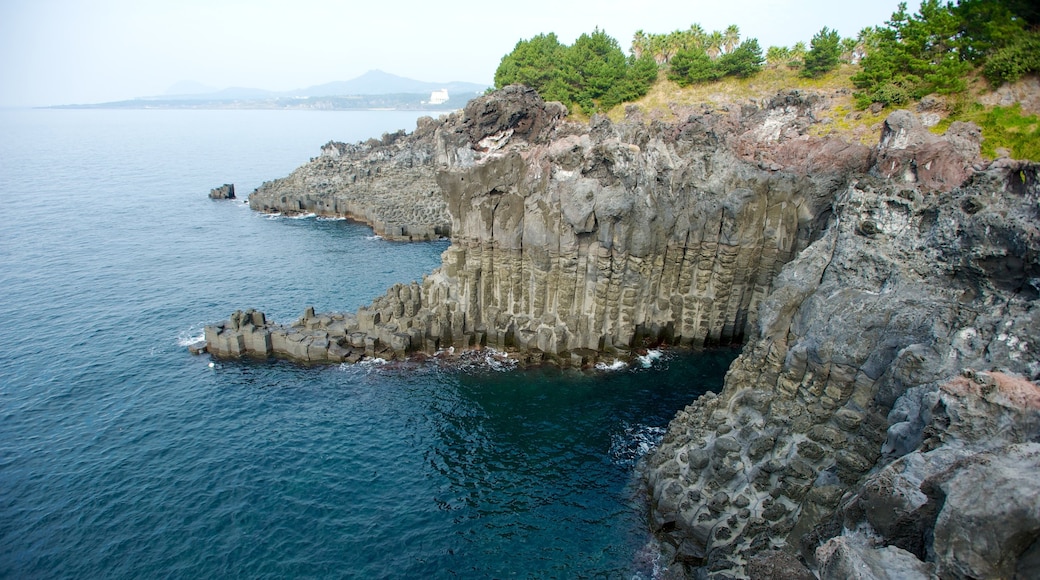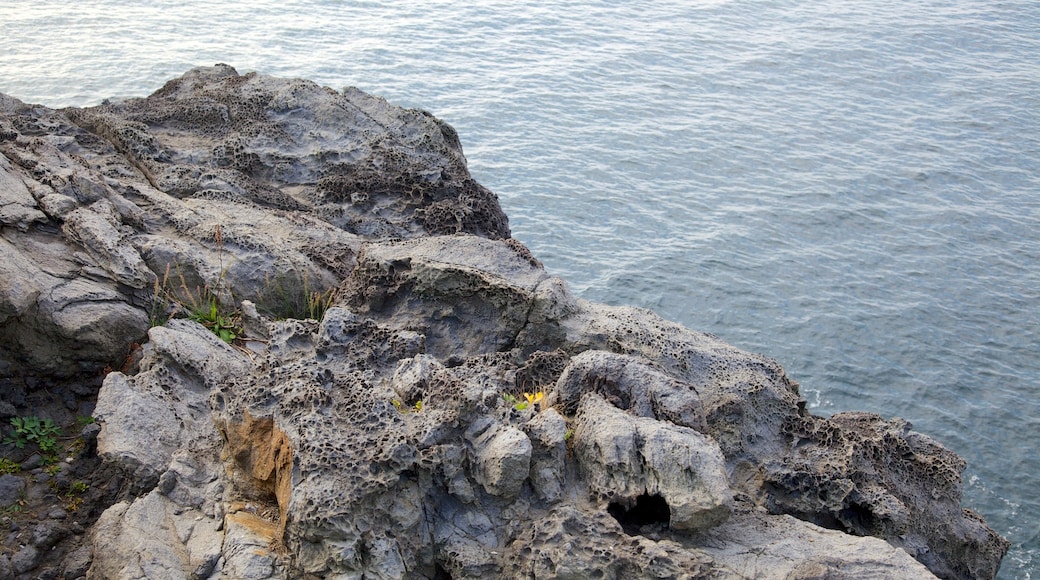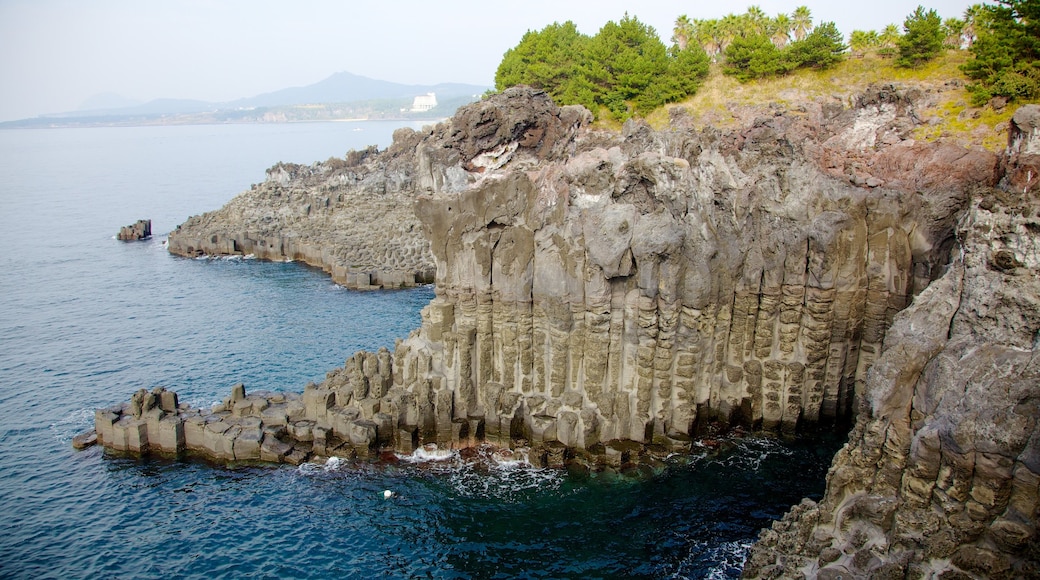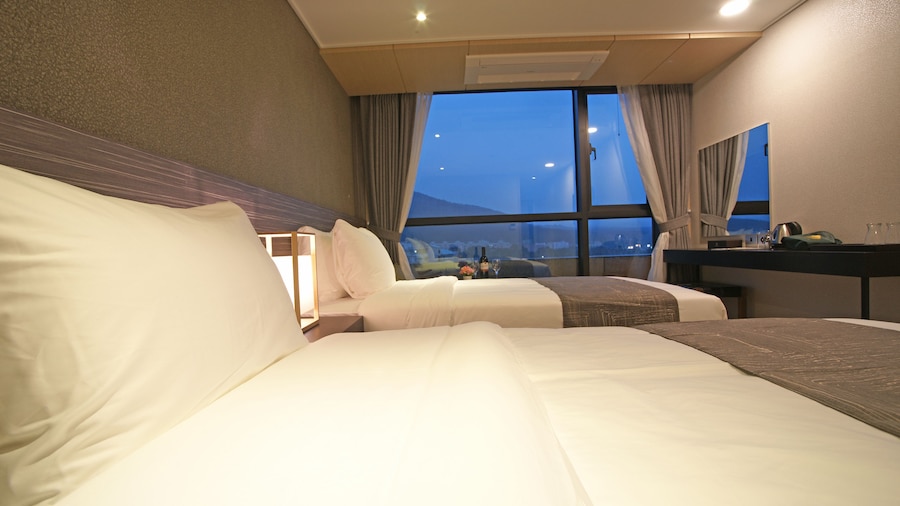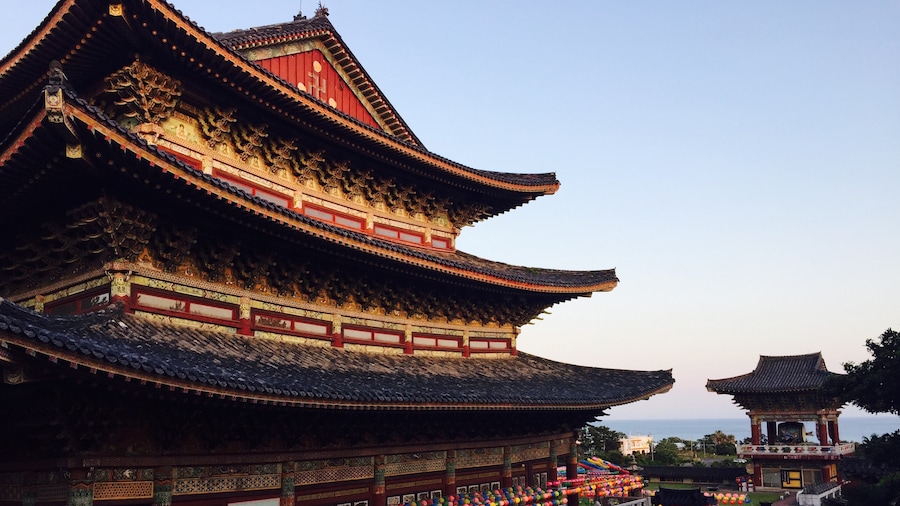Sparkling blue waters and unusual cylindrical cliff formations are to be found on Jeju Island’s south coast.
The Jusang Jeolldae rock formations run for a short way along the south coast of Jeju Island. Thousands of visitors come here each year to photograph the pillar-shaped formations that look like artworks.
The formations are the result of lava flow into the sea after the eruption of Mount Hallasan between 14,000 and 25,000 years ago. The lava cooled into unusual hexagonal shapes and columns of different lengths that step out into the bright blue waters of the Sea of Jungmun. Over thousands of years the cliffs have been shaped by movement of the earth and water. Scientists consider Jusang Jeolldae to be an important study of rock formations.
The contrast of the glistening black rocks against the bright blue of the ocean makes for one of the most dramatic scenes on the island. Thanks to the area’s natural beauty it has been listed as one of Jeju Island’s cultural monuments, and many tourists visit the area. Observation decks and signed paths make the formations easy to admire from the top of the cliff.
Spend a while here marveling at nature’s own artworks, taking photographs and watching the waves crash against the cliffs. Bring a picnic and admire the view as you eat, or wait for just the right light to take the perfect photograph of the scene.
To get here take the Jungmun bus from the Seogwippo Terminal. The ride takes around 20 minutes. To get to the cliffs you will have to walk a further 15 minutes. There is no charge to view the cliffs. Be aware that there are steep drops, so practice caution at all times. It’s possible to rent boats and view Jusang Jeolldae from the water, but strong winds make the water around the rocks choppy. Do so at your own risk.
